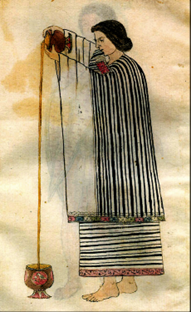Punta Food & Agri
Cacoa and coffee sector

Food and Agri
Punta is successfully developing reliable supply from sustainable sources in the cacoa and coffee sector from Latin American and Asian producers to Europe both spot and long-term contracts.

Our selection
We have carefully selected beans from both conventional and specialty cacao, with great care to flavour, consistency, sustainability, and variety from:
- Venezuela
- Ecuador
- Dominican Republic
- Guatemala
- Ivory Coast
- Sierra Leone
What we offer
Punta also offers logistical services, physical storage of the beans, tailormade technical, assistance and product marketing.
The global cocoa sector has different market segments with different prices and opportunities. Understanding the segmentation of the market, will enable more focusing on the final client and the positioning of our offer.
Our selected range
- Porcelana
- Sur del Lago
- Criollo Merideño
- Cuyagua
- Ocumare
- Choroni
- Guatemala
- Ecuador
Specialty cacao offer
The specialty beans sourced are of high-quality cacao, flawless, single origin, unique, and fully traceable. Beans designed to meet the chocolate maker’s desired tasting profile based on sensory characterisation.



Quality, traceability, and transparency
The best quality cacao, fully traceable from trustworthy supply chains delivered from our warehouse in Amsterdam or from the port of origin.
We provide a comprehensive insight of the quality purchased as well as full traceability of the value chain.

History of cacao
The genetic birthplace of cocoa is the Orinoco and Amazon region in South America. There is a debate about the origin and domestication of cocoa, but most probably its center is near the Colombian-Ecuadorian border (Motamayor et al., 2002). These beans have been dated as far back as 5,500 years ago and prized by many different civilizations as they were used both for food and as currency (Young, 2008; Presilla, 2009).
After their introduction into Mesoamerica, two notable mentions from Mayan mythology are found. The first was ‘Kukulkan’ who delivered these gifts down from paradise after they had eaten chocolate during a heavenly feast. The other is ‘Quetzalcoatl’, a trickster god who taught the Aztecs to ferment and roast cocoa beans before grinding them with water. He also instructed his apprentices on how to best mix their chili-based drink known as cacahuatl or ‘cacao water’ (Coe & Coe, 2013; Young, 2008). Archaeologists deciphered in classic Mayan glyphs the word ‘kakaw’ providing the root to the Spanish word ‘cacao’ (Presilla, 2009).
In 1502, Columbus’ fourth voyage stumbled upon a Mayan trading canoe near Guanaja, an island north of what is now Honduras. Among the many items captured were ‘almonds’ that Ferdinand (Columbus’ second son) noticed to be of great value: When they were brought on board ship, he observed that when any of the almonds fell, they all stooped to pick it up “as if an eye had fallen” (Colón, 1867; Morisson, 1963). The Spaniards arrived in the 16th century at the pinnacle of the Mesoamerican ‘kakaw’ culture. The invaders first became familiar with cocoa and the chocolate drink in the Maya lowlands, where it was called chacau haa, or ‘hot water’ or chocol haa (Yucatán). Mexican philologist Ignacio Dávila Garibí has credibly proposed that the Mayan chocol (hot) and Aztec atl (water)—combining to chocolatl—was the best way for the Spanish to describe to the Aztec people the beverage they had learned to drink in the Maya lowlands – hot and sweetened with sugar (and not the cold, bitter cacahuatl of the Aztecs) (Dávila Garibí, 1939). One of many pre-Columbian recipes for cocoa beverages was “chocolate” and in many early accounts it was a Guatemalan recipe (Martin, Sampeck, 2018). In this regard, “chocolate” was by no means the word or recipe of choice until the sixteenth century at the earliest.
The advent of the chocolate industry did not come without social and economic hardship for the Native American population. The European colonial regimes started commercially cultivating cocoa in what are today Belize, Guatemala, Honduras and in the lowlands of Mexico. The Spaniards implemented a system called encomienda, whereby colonialists were given land to exploit, including the Native Americans living there. They were able to keep a fixed portion of the income and the rest was paid to the Spanish crown. This new commodity was first shipped to Europe in 1530 (Young, 2008), although others report the first official shipment to be in 1585, from Veracruz to Seville (Coe & Coe, 2013). It took some time for the drink to become popular in other European countries – the British even burned several Spanish shiploads in the late 16th century, thinking the beans were sheep droppings (Coe & Coe, 2013). But, eventually the Mesoamerican tradition was followed all over Europe: cocoa beans were ground into a paste and spices were added to create the first non-alcoholic stimulant drink in Europe (Young, 2008).
Europeans introduced the cocoa seeds to other regions, such as the Caribbean in 1660 and Asia in 1778. In 1824, Portuguese transplanted forastero cuttings reached São Tomé from Brazil. From São Tomé the crop made its journey to the island of Fernando Po (1850), from there into the Gold Coast (Ghana), Nigeria and Cameroon (planted by the Germans) and by 1905 it reached Côte d’Ivoire (Coe & Coe, 2013), becoming in many of these West African countries the major agricultural source of income.
Source of the text: Global Cocoa Market Study, Gaia Cacao, 2021.
